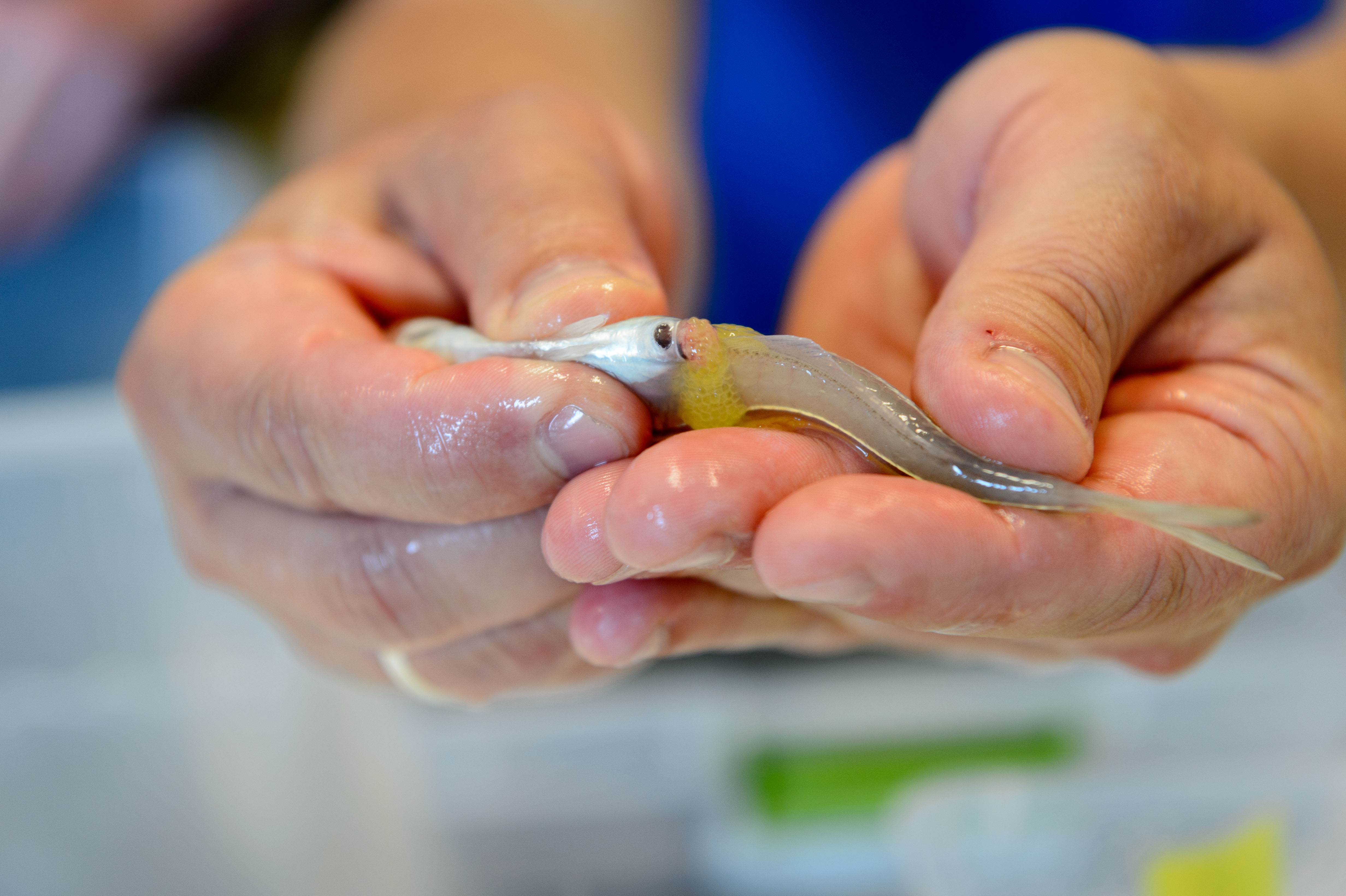Hannes Baumann, assistant professor of marine sciences, specializes in research on how fish populations are adapted to natural variability in their environment and how they react to ongoing anthropogenic changes in the oceans and coastal waters. These include changes in pH (ocean acidification) and temperature (global warming), but also man-made alterations to the marine food web (fisheries exploitation) and natural mortality patterns (selection).
This summer, with funding from the National Science Foundation, Baumann and his team are conducting research on seasonal changes in spawning and offspring sensitivity in the Atlantic Silverside (Menidia menidia). The Atlantic Silverside is an inconspicuous but ecologically important fish that spawns in saltwater marshes and comprises one of the most abundant food sources for striped bass, bluefish, yellowtail flounder, and others along the American east coast.
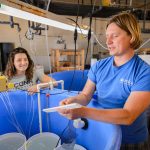
Hannes Baumann shows Elle Parks (REU 2017) how individual screens with numbered embryos are suspended in the the rearing containers, at the Rankin Laboratory at the Avery Point campus. Parks is researching the effects of CO2 and temperature on the starvation resistance of Silverside larvae. (Peter Morenus/UConn Photo)
BaumannLab170609b213
Hannes Baumann shows Elle Parks (REU 2017) how individual screens with numbered embryos are suspended in the the rearing containers, at the Rankin Laboratory at the Avery Point campus. Parks is researching the effects of CO2 and temperature on the starvation resistance of Silverside larvae. (Peter Morenus/UConn Photo)
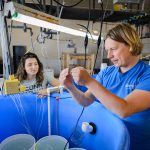
Screens with numbered embryos are suspended in each rearing container using fish line. (Peter Morenus/UConn Photo)
BaumannLab170609b196
Screens with numbered embryos are suspended in each rearing container using fish line. (Peter Morenus/UConn Photo)
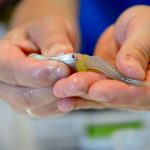
Hydrated, ready-to-be-fertilized eggs are squeezed from the abdomen of a female Atlantic Silverside with gentle pressure. (Peter Morenus/UConn Photo)
BaumannLab170609b056
Hydrated, ready-to-be-fertilized eggs are squeezed from the abdomen of a female Atlantic Silverside with gentle pressure. (Peter Morenus/UConn Photo)
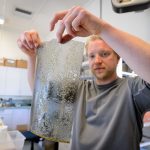
Ph.D. student Chris Murray inspects a screen with newly fertilized Atlantic Silverside embryos, prior to starting a new set of experiments. (Peter Morenus/UConn Photo)
BaumannLab170609b308
Ph.D. student Chris Murray inspects a screen with newly fertilized Atlantic Silverside embryos, prior to starting a new set of experiments. (Peter Morenus/UConn Photo)
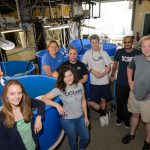
Members of the Baumann lab work together to begin a new set of experiments in the Rankin Lab at UConn Avery Point. From left, Julie Pringle, Hannes Baumann, Elle Parks, Jacob Snyder, James Harrington, Isaiah Mayo, and Chris Murray. (Peter Morenus/UConn Photo)
BaumannLab170609b115
Members of the Baumann lab work together to begin a new set of experiments in the Rankin Lab at UConn Avery Point. From left, Julie Pringle, Hannes Baumann, Elle Parks, Jacob Snyder, James Harrington, Isaiah Mayo, and Chris Murray. (Peter Morenus/UConn Photo)
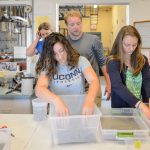
Elle Parks and Julie Pringle strip-spawn Atlantic silverside females into spawning dishes that are covered in window screen for the eggs to attach to. (Peter Morenus/UConn Photo)
BaumannLab170609b046
Elle Parks and Julie Pringle strip-spawn Atlantic silverside females into spawning dishes that are covered in window screen for the eggs to attach to. (Peter Morenus/UConn Photo)
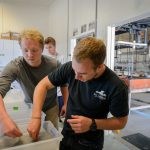
Chris Murray, left, and Jake Snyder strip-spawning. (Peter Morenus/UConn Photo)
BaumannLab170609b003
Chris Murray, left, and Jake Snyder strip-spawning. (Peter Morenus/UConn Photo)
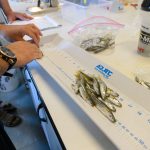
All adult Silversides used to produce new offspring are measured and preserved. (Peter Morenus/UConn Photo)
BaumannLab170609b079
All adult Silversides used to produce new offspring are measured and preserved. (Peter Morenus/UConn Photo)
In order to study the sensitivity of the very young fish to low pH and low oxygen, caused by climate change and excess nutrients in the water, the researchers obtain embryos from fish caught in the wild and raise them in the lab. They also produce Silverside offspring in the lab by strip-spawning males and females and then counting the eggs.
Graduate student Chris Murray is studying the sensitivity of offspring to the separate and combined effects of high CO2 and low oxygen. REU student Elle Parks is looking at the effects of CO2 and temperature on the starvation resistance of silverside larvae.
Together with Baumann, graduate student James Harrington is rearing fish in collaboration with colleagues from Cornell University, for purposes of genetic studies. Their goal is to develop an annotated genome of the species, which will assist in understanding the molecular and genetic responses of the organisms to local selection regimes and marine climate change.
